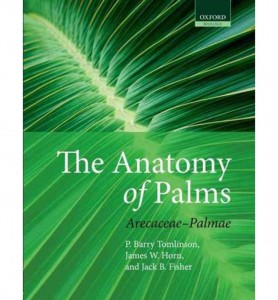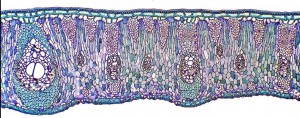
Palms are recognized as icons of the tropics, in addition to being the source of many economically significant products that extend relevance of the group to millions of people daily. Striking morphological and ecological variability characterize this family of about 183 genera and more than 2,400 species and has inspired almost two centuries of botanical research.
Hidden from view, but no less compelling, is the internal structure of palms—an understanding of which is essential for interpreting many of the unique biological aspects of the family and discerning relationships among palm genera. The Anatomy of Palms (Oxford University Press; 2011), a new book by P. Barry Tomlinson, James W. Horn (Department of Botany, Smithsonian), and Jack B. Fisher is a definitive reference showcasing both the science and art inside palms.
The chief appeal of The Anatomy of Palms is some 800 color photographs that document the extent of palm anatomical diversity. To give the preparations a more natural, hydrated appearance, as well as to overcome technical difficulties inherent in making microscope slides of palm tissues, many of the photos were custom-made for the book.
Image left: Colpothrinax wrightii, the Cuban belly palm. Leaf lamina in transverse section, stained with aqueous toluidine blue. From The Anatomy of Palms.
Palm biologists, plant anatomists, and curious botanists working in other disciplines will find that the book contains abundant new data, new interpretations, and new ideas for future studies. The first section provides an overview of the diversity of vegetative structure in palms and an evolutionary analysis of anatomical characters across the entire family. The second section focuses on the systematic anatomy of palms and is a synthesis of anatomical observations in the context of the most recent classification of the family.
The Anatomy of Palms has the potential for initiating a new wave of reinterpretation of palm fossils because of their often excellent anatomical preservation. The book also gives the classical field of comparative anatomy a fresh perspective, which will hopefully inspire others to do similar work. (Adapted from an article in The Plant Press, Department of Botany, Smithsonian Institution)






